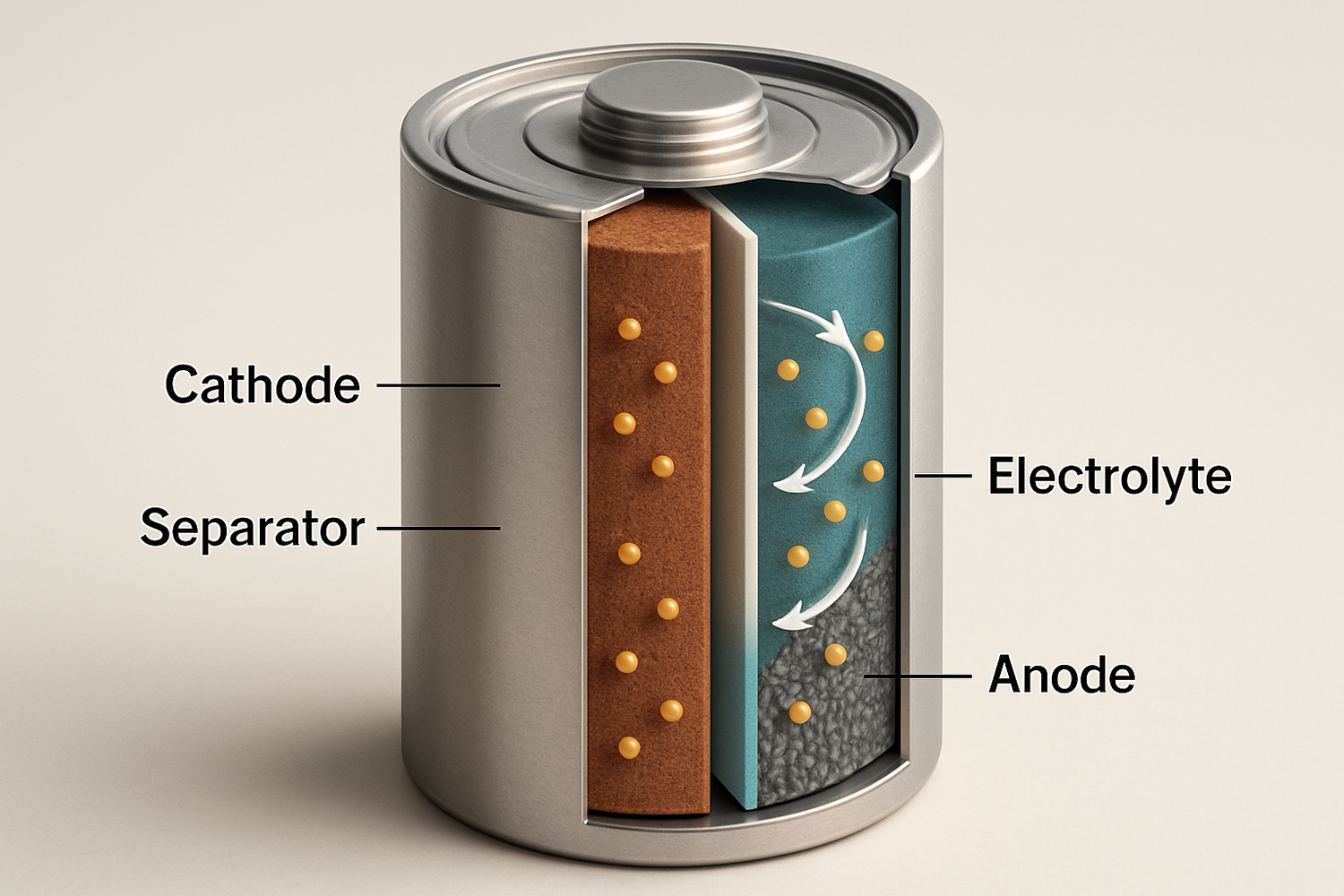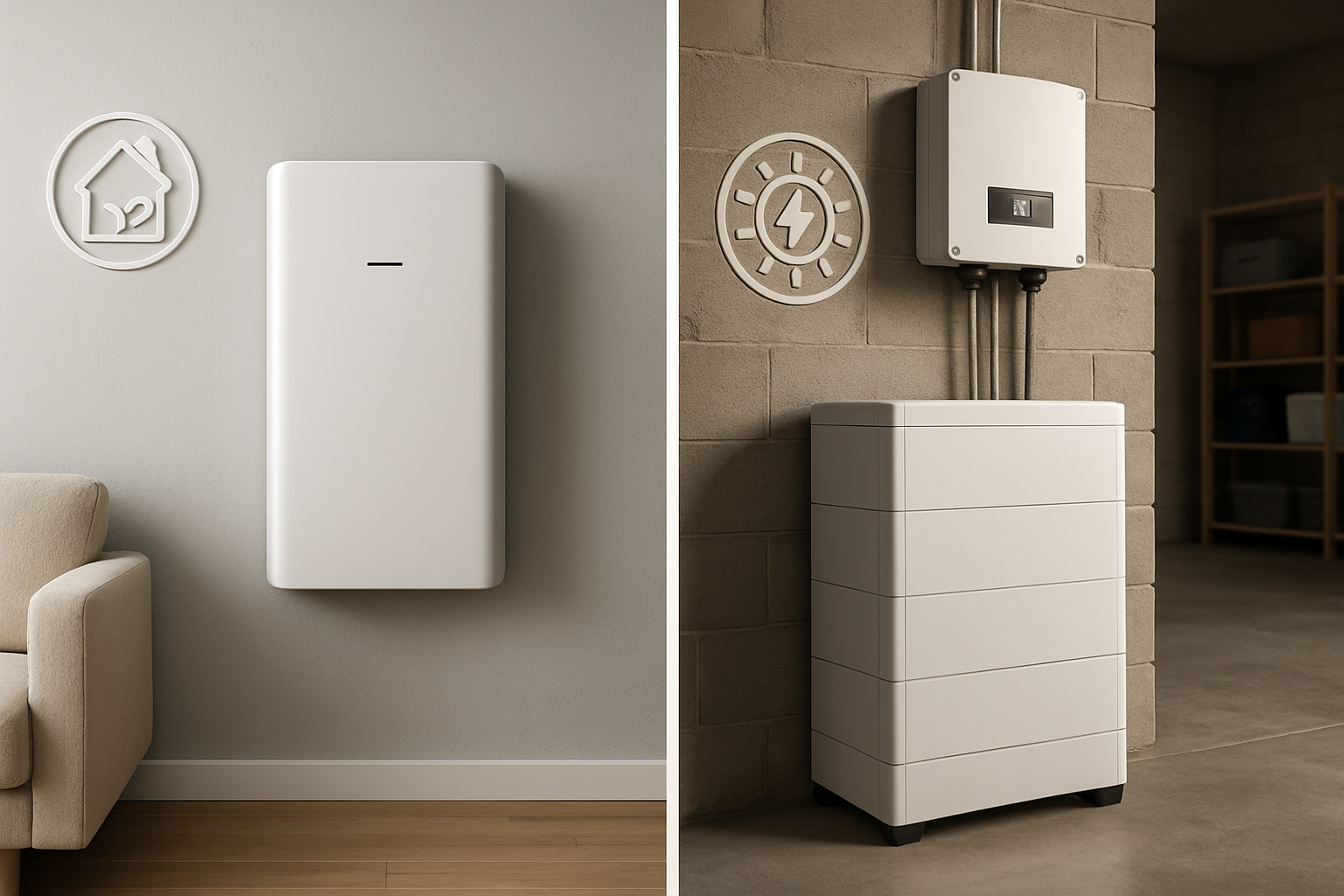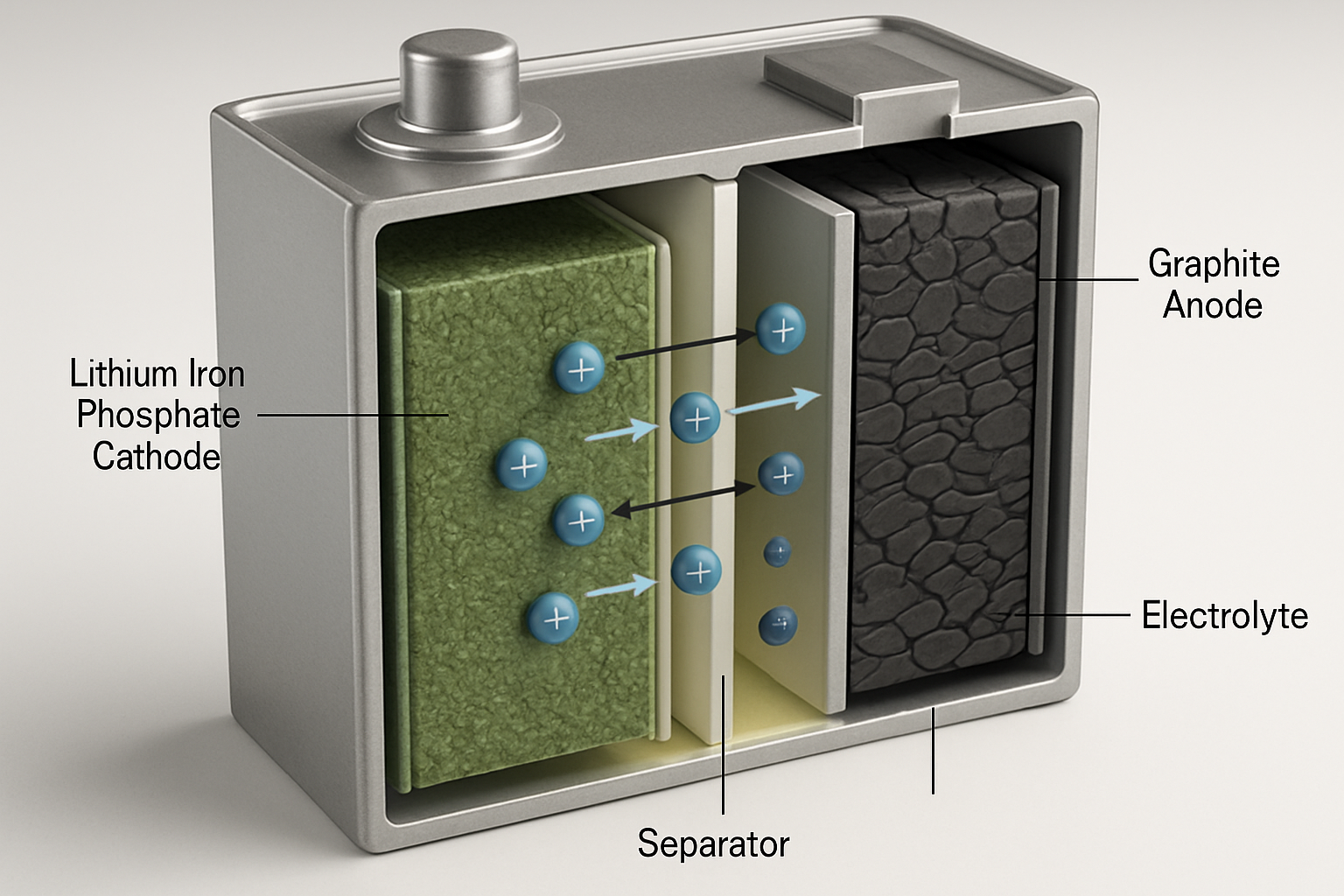Choosing the right battery for your solar energy system is a critical decision. The battery's internal chemistry is the foundation of its performance, dictating its safety, lifespan, and overall value. Understanding the fundamentals of lithium battery chemistry empowers you to select an energy storage solution that aligns with your goals for energy independence and reliability.
The Core Components of a Lithium-Ion Battery
At its heart, a lithium-ion battery is a sophisticated device for storing and releasing energy through the controlled movement of ions. Four key components work in concert to make this happen.
Cathode: The Heart of the Chemistry
The cathode is arguably the most important part, as its material composition defines the battery's primary characteristics. It is the source of lithium ions during discharge. The specific chemistry of the cathode—such as Lithium Iron Phosphate (LFP) or Lithium Nickel Manganese Cobalt Oxide (NMC)—determines the battery's voltage, capacity, safety, and lifespan. According to the International Energy Agency's report, The Role of Critical Minerals in Clean Energy Transitions, the evolution of cathode chemistries is a major driver in battery development.
Anode, Electrolyte, and Separator
The anode stores the lithium ions when the battery is charged, typically made of graphite. The electrolyte is a chemical medium, often liquid, that allows ions to flow between the cathode and anode but blocks electrons. Finally, the separator is a physical barrier that prevents the cathode and anode from touching, which would cause a short circuit, while still allowing ions to pass through.
A Closer Look at Key Lithium-Ion Chemistries for Solar
While many lithium-ion chemistries exist, a few have become prominent in solar storage applications. Each offers a unique balance of properties.
Lithium Iron Phosphate (LFP or LiFePO4): The Safety-First Champion
LFP batteries use a phosphate-based cathode material. This chemistry is known for its exceptional thermal and chemical stability. The strong covalent bond between the phosphorus and oxygen atoms in its olivine crystal structure makes it highly resistant to overheating, even under fault conditions. This inherent safety makes it an ideal choice for residential energy storage systems. LFP batteries also offer a very long cycle life, often capable of thousands of charge-discharge cycles with minimal degradation.
Lithium Nickel Manganese Cobalt Oxide (NMC): The Energy Density Leader
NMC batteries feature a layered oxide cathode containing a combination of nickel, manganese, and cobalt. This chemistry provides a higher energy density, meaning it can store more energy in a smaller, lighter package. This attribute has made it a popular choice for electric vehicles, where space and weight are primary concerns. For stationary solar storage, its advantages in energy density are often weighed against a shorter cycle life and lower thermal stability compared to LFP.
Other Notable Chemistries
Other chemistries like Lithium Nickel Cobalt Aluminum Oxide (NCA) and Lithium Cobalt Oxide (LCO) also exist. NCA offers high energy density similar to NMC but is less common in residential solar due to cost and thermal stability considerations. LCO, one of the earliest commercial chemistries, is primarily used in consumer electronics like phones and laptops due to its high energy density but is not suitable for large-scale storage because of its shorter lifespan and safety concerns.
How Chemistry Translates to Real-World Performance
The choice of cathode material directly influences the practical performance of your solar battery. These differences are crucial when designing a reliable home energy storage system.
Safety and Thermal Stability
Safety is paramount in a home battery system. LFP's stable structure means it is far less prone to thermal runaway—a dangerous condition where a battery overheats uncontrollably. NMC and NCA chemistries, while safe under normal operation with a robust Battery Management System (BMS), have a lower thermal runaway threshold. This makes LFP a more conservative and often preferred choice for in-home installations.
Lifespan and Cycle Count
A solar battery is a long-term investment. The number of times a battery can be charged and discharged before its capacity significantly degrades is its cycle life. Due to its robust crystal structure, LFP chemistry experiences less stress during ion movement, leading to a much longer cycle life. An LFP battery can often deliver several thousand cycles, while an NMC battery may offer a lower cycle count under similar conditions.
Energy Density and Physical Footprint
Energy density refers to the amount of energy stored per unit of volume or weight. NMC's higher energy density means an NMC battery pack will be smaller and lighter than an LFP battery of the same capacity. In a residential setting where space is usually not the primary constraint, the larger footprint of an LFP battery is a minor trade-off for its significant gains in safety and longevity.
| Feature | Lithium Iron Phosphate (LFP) | Nickel Manganese Cobalt (NMC) | Nickel Cobalt Aluminum (NCA) |
|---|---|---|---|
| Safety | Excellent | Good | Fair |
| Lifespan (Cycle Life) | Excellent (3,000-6,000+ cycles) | Good (1,000-2,000 cycles) | Fair (500-1,000 cycles) |
| Energy Density | Good | Excellent | Excellent |
| Thermal Stability | Excellent | Good | Fair |
| Primary Application | Stationary Energy Storage, Commercial Vehicles | Electric Vehicles, Consumer Electronics | High-Performance Electric Vehicles |
Matching the Right Chemistry to Your Solar Needs
Your specific application should guide your choice of battery technology. For a home solar storage system, the priorities are different from those for a portable power pack or an electric car.
Prioritizing Longevity and Safety for Home Storage
For a stationary system that will power your home for a decade or more, safety and a long lifespan are the most important factors. The U.S. Department of Energy highlights the growing need for energy storage to stabilize the grid as more solar is deployed. As noted in a recent success story on improving interconnection for solar and battery storage, reliable and safe systems are key to community resilience. LFP chemistry's profile aligns perfectly with these requirements, providing peace of mind and long-term value.
Understanding Performance Metrics in Context
While understanding the fundamental chemistry is crucial, evaluating a battery's practical application requires a look at its specific performance metrics. Factors like C-rate, depth of discharge (DoD), and efficiency ratings provide a complete picture of a battery's capabilities. For a detailed breakdown of how to assess these specifications, the Ultimate Reference for Solar Storage Performance offers an in-depth analysis to guide your evaluation.
A Forward Look at Battery Technology
The field of battery technology is constantly advancing. Research into new chemistries and materials promises even better performance in the future. The International Energy Agency's The State of Energy Innovation report points to ongoing work in areas like solid-state batteries and chemistries that use more abundant materials. These developments aim to further improve safety, increase energy density, and reduce costs, continuing to expand the possibilities for energy storage solutions.
Final Thoughts on Your Energy Independence
The chemistry inside your solar battery is the engine driving its performance. By understanding the key differences between chemistries like LFP and NMC, you can make a well-informed choice. For most home solar storage applications, the superior safety, stability, and long cycle life of Lithium Iron Phosphate (LFP) chemistry make it a compelling and reliable foundation for achieving energy independence.
Frequently Asked Questions
Why is LFP considered safer than NMC for home solar storage?
LFP's safety comes from its stable olivine crystal structure and strong phosphorus-oxygen bonds. This makes it highly resistant to thermal runaway, even if overcharged or damaged. NMC's layered structure is less stable at high temperatures, giving it a lower thermal runaway threshold.
Does higher energy density always mean a better battery?
Not necessarily. Higher energy density is critical for applications where weight and space are limited, such as in electric vehicles or smartphones. For stationary home energy storage, where space is less of a concern, safety, longevity, and cost-effectiveness are often more important metrics than energy density.
How does temperature affect different lithium battery chemistries?
All batteries are affected by temperature, but some chemistries are more resilient than others. LFP batteries generally have a wider operating temperature range and are less susceptible to performance degradation and safety issues at high temperatures compared to NMC and other high-energy-density chemistries. A quality Battery Management System (BMS) is essential for all types to ensure they operate within their safe temperature limits.





Leave a comment
All comments are moderated before being published.
This site is protected by hCaptcha and the hCaptcha Privacy Policy and Terms of Service apply.